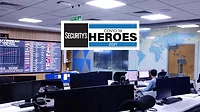Addressing crisis management team burnout

Image by biscotto.design via Freepik
Since late 2019, we have collectively experienced multiple, often concurrent, crises across the spectrum of natural disasters, political instability, civil unrest, ransomware, sanctions, data breaches, and of course, overlaid across it all, the COVID-19 pandemic. Some slowly evolving and protracted, others short and intense — all impactful to life and safety, and all challenging to successfully manage.
During this unprecedented period, employees and employers have experienced enormous strain as their organizations strive to manage the impact of crises, continue business operations, reassure employees and investors — and often, merely survive. Crisis management teams (CMT), some of which didn’t exist before the pandemic, have shouldered a significant amount of the burden, many in a constant state of ‘on’ for more than two years, managing sustained and simultaneous crises.
This was evidenced in a recent International SOS crisis management benchmarking survey where 60% of participants confirmed their CMT met daily during the initial phases of the pandemic. Just as the severity of the pandemic eased in many countries following the success of their respective vaccination programs, CMTs were reactivated to formulate and oversee an effective response to the wide-ranging life, safety, political, economic and legal impacts resulting from the escalated conflict between Russia and Ukraine.
International SOS has found that very few individuals in client organizations have specialized crisis expertise and that it’s often a side-of-desk function that they have agreed to when taking on additional management responsibilities, including the additional scrutiny (internal and external) on decisions and actions taken. With the increased length of major escalations, individuals on the CMTs are managing multiple roles and maintaining their own resilience, all while leading by example. This puts a huge strain on their capacity to deal with the myriad of issues and, for a number of non-specialist leaders, is contributing to burnout, erosion of trust and credibility among management teams. Moreover, many members of CMTs lack the appropriate devolved accountability, including financial authority, impacting effective execution of agreed decisions.
The mental health and well-being of CMTs are also factors that, if not properly managed, can lead to burnout. I spoke with my medical counterpart, Dr. Robert Quigley, SVP and Global Medical Director at International SOS, and he raised his concerns that current circumstances have, for the first time, simultaneously created multiple crises related to, among other things, our fears, our health and our economy. Individuals feel overwhelmed and, in some respects, are suffering from post-traumatic stress disorder (PTSD). The World Health Organization estimates that the pandemic triggered a 25% increase in the prevalence of anxiety and depression worldwide. These increases were seen not only in various sectors and geo-markets but across different job functions within organizations.
This results in feelings of inability to cope and can significantly exacerbate the onset of crisis management fatigue in leaders, who are often shouldering the added burden of a ‘day job,’ as well as one or more CMT roles. This highlights the urgent need to improve awareness of mental health issues, not only for the organization, but especially for the CMT.
The following are seven tips informed by recent crisis management consulting engagements across the globe and includes practical approaches used by International SOS to keep its own crisis management response on track over the past several years:
1. Composition
First and foremost, CMTs need to be populated by willing individuals and those who bring energy and positivity to the challenge. Wherever possible, this should be formally acknowledged and, if the responsibility comes with a particular role, captured in the formal job description. Likewise, ensure their commitments to the ‘extra hat’ are recognized and ideally incentivized. It’s extremely important that the CMT includes appropriate administrative support — it’s both inefficient and disincentive if the crisis leader or coordinator is also responsible for taking and distributing the minutes of the meetings. Last, and far from least, is having alternates identified for every role and ensuring they also meet the aforementioned requirements.
2. Structure & Participation
It’s important to clearly define the crisis management structure that accommodates the organizational design and culture of your organization. It’s also paramount that roles and responsibilities are clearly and succinctly articulated. Moreover, the design must include articulation of accountability, including financial authority specific to crisis roles, that may exceed the limits of the individual’s usual role. Attendance at the CMT should apply the overarching principle that fewer is better. Too many attendees often result in long, inefficient, and frustrating meetings, particularly as people join late and key elements of the agenda need to be repeated — that becomes exhausting. I’m quite an advocate of having a core team (whether at country, region/business or corporate team level) and non-core team. Moreover, it’s important that there is a consistent and repeatable meeting structure that is efficient, logical and intuitive.
3. Coaching
There is a lot of merit in establishing a coaching function for CMTs. Coaches provide an independent eye on how the team operates, allowing the leader to focus, and enables continuous review. When the coaching function is positioned as an advisor to the CMT leader, it also helps share the risk and reduce the burden on individuals in key crisis management roles who may be less familiar with the technical aspects. At International SOS, we use a team of Corporate Crisis Coordinators who provide this observation and coaching function for Regional and Country CMTs. Ensure that one of the Coordinators is assigned in support of a Regional or Country CMT to ensure that there is a facility for feedback and advice to the CMT Leader. An added benefit is that coaches often notice when leaders are becoming fatigued and can suggest additional contingencies to consider, recommend mobilization of additional resources when required, and provide discreet and objective feedback to leaders between team meetings that are outside of their performance management structure.
4. Governance
It’s important that the organization’s approach to crisis management, along with its structure, are codified and readily available to CMT members. It’s also important to encourage a reflex of early and rapid escalation of the CMT, alongside a culture of prudent de-escalation. I also recommend in early meetings to clearly agree on triggers for reducing frequency or ending meetings, revisit the triggers regularly if the crisis is protracted — and know when to call an end to a crisis.
5. Tools & Technology
Tools need to be easy to maintain, seamless to access, and reliable. While mass communication tools were considered the second most valuable tool respondents had used, quality of data and ease of use were also concerns. In implementing these tools, it is essential that the data transfer strategy from your system of record is systematic, and that periodic tests, access reviews, and training are conducted for end users.
6. Mental Health & Emotional Support
There are three key strategies that organizations should look to implement and promote mental well-being:
● Take steps to check in individually with every employee, including senior and mid-level managers;
● Make sure employees have and are aware of secure routes for reporting their mental health status and any emergent issues;
● Create a workplace that is conducive to good mental health by addressing stigma.
7. Review, Renew & Rehearse:
When assessing your CMT, it’s important do the following:
● Apply a disciplined approach to performing post-mortems, do them early, and seek contributions from all vantages, including coaches, if you have appointed them.
● Ensure the findings are widely communicated and appropriately archived for future reference. Be sure to include positive takeaways as there is a natural penchant for focusing on what didn’t work.
On a semi-regular basis, perform a gap analysis of your capability and refer to the areas for improvement that have been previously captured to see if the lessons identified were applied and improved capability next time around. While meeting with your CMT, conduct realistic and interesting training. Don’t just go through the motions or ‘tick the governance box’ because you have already been having crisis meetings. Select other themes to exercise that contribute value, such as cyber-related scenarios, and exercise other members of the team, possibly led by your listed alternates. A professionally run simulation exercise for CMT members who understand their roles is enjoyable and reveals potential gaps that could prevent a real crisis. Likewise, consider exercising your critical suppliers and vendors to understand your dependencies and mutual capabilities to support. Lastly, a well-run scenario reinforces the challenges of and impact of the so-called ‘infodemic,’ along with techniques to mitigate it.
CMTs with a mature approach can keep burnout at bay and make sustained, sound decisions, making them far more likely to successfully manage the crises of now, and future crises. Most importantly, making sure your CMT and employees know they will be supported during a crisis engenders trust, boosts morale and contributes to retention.
This article originally ran in Security, a twice-monthly security-focused eNewsletter for security end users, brought to you by Security Magazine. Subscribe here.
Looking for a reprint of this article?
From high-res PDFs to custom plaques, order your copy today!








